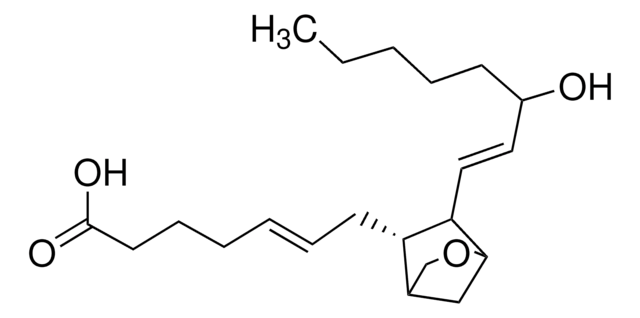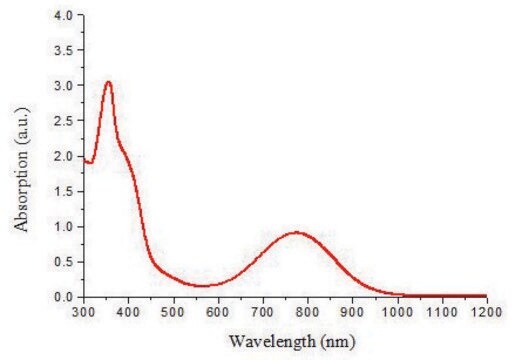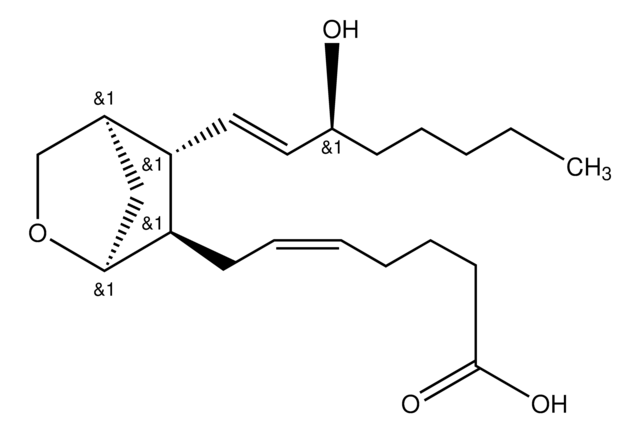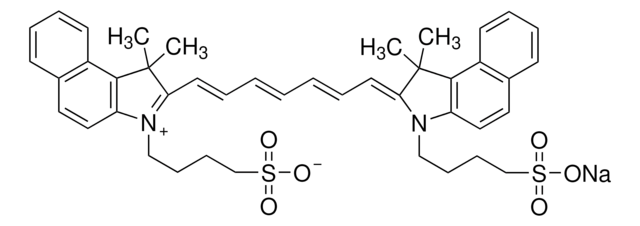AB5186
Anti-Potassium Channel Kv2.1 Antibody
Chemicon®, from rabbit
Sign Into View Organizational & Contract Pricing
All Photos(1)
About This Item
UNSPSC Code:
12352203
eCl@ss:
32160702
NACRES:
NA.41
Recommended Products
biological source
rabbit
Quality Level
antibody form
purified immunoglobulin
antibody product type
primary antibodies
clone
polyclonal
species reactivity
rat
manufacturer/tradename
Chemicon®
technique(s)
immunohistochemistry: suitable
western blot: suitable
NCBI accession no.
UniProt accession no.
shipped in
wet ice
target post-translational modification
unmodified
Gene Information
human ... KCNB1(3745)
Specificity
Recognizes a full length Kv2.1 protein. Does not cross react with any other potassium channel antigens tested so far.
SPECIES REACTIVITIES: Should work in mouse (100% epitope homology) and in human and rabbit (88% epitope homology). Other species have not been tested.
SPECIES REACTIVITIES: Should work in mouse (100% epitope homology) and in human and rabbit (88% epitope homology). Other species have not been tested.
Immunogen
Purified peptide from rat Kv2.1 (amino acids 841-857) (Accession P15387),
Application
Anti-Potassium Channel Kv2.1 Antibody detects level of Potassium Channel Kv2.1 & has been published & validated for use in IH & WB.
Research Category
Neuroscience
Neuroscience
Research Sub Category
Ion Channels & Transporters
Ion Channels & Transporters
Western blot: 1:250-1:500 using ECL on rat brain membranes.
Immunohistochemistry using rat brain sections.
Dilutions should be made using a carrier protein such as BSA (1-3%)
Optimal working dilutions must be determined by the end user.
Immunohistochemistry using rat brain sections.
Dilutions should be made using a carrier protein such as BSA (1-3%)
Optimal working dilutions must be determined by the end user.
Physical form
Format: Purified
Purified immunoglobulin by Protein A. Lyophilized from phosphate buffered saline, pH 7.4, containing 1% BSA, 5% sucrose as a stabilizer and 0.025% sodium azide as a preservative. Reconstitute with 50 μL of sterile deionized water. Centrifuge antibody preparation before use (10,000 xg for 5 min).
Storage and Stability
Maintain lyophilized material at -20°C for up to 12 months. After reconstitution maintain at -20°C in undiluted aliquots for up to 6 months. Avoid repeated freeze/thaw cycles.
Analysis Note
Control
CONTROL ANTIGEN: Included free of charge with the antibody is 20 μg of control antigen (lyophilized powder in phosphate buffered saline, pH 7.4, containing 5% sucrose and 0.025% sodium azide). The stock solution of the antigen can be made up using 50 μL of sterile deionized water. For negative control, preincubate 1 μg of peptide with 1 μg of antibody for one hour at room temperature. Optimal concentrations must be determined by the end user.
CONTROL ANTIGEN: Included free of charge with the antibody is 20 μg of control antigen (lyophilized powder in phosphate buffered saline, pH 7.4, containing 5% sucrose and 0.025% sodium azide). The stock solution of the antigen can be made up using 50 μL of sterile deionized water. For negative control, preincubate 1 μg of peptide with 1 μg of antibody for one hour at room temperature. Optimal concentrations must be determined by the end user.
Other Notes
Concentration: Please refer to the Certificate of Analysis for the lot-specific concentration.
Legal Information
CHEMICON is a registered trademark of Merck KGaA, Darmstadt, Germany
Disclaimer
Unless otherwise stated in our catalog or other company documentation accompanying the product(s), our products are intended for research use only and are not to be used for any other purpose, which includes but is not limited to, unauthorized commercial uses, in vitro diagnostic uses, ex vivo or in vivo therapeutic uses or any type of consumption or application to humans or animals.
Not finding the right product?
Try our Product Selector Tool.
Storage Class
11 - Combustible Solids
wgk_germany
WGK 3
Certificates of Analysis (COA)
Search for Certificates of Analysis (COA) by entering the products Lot/Batch Number. Lot and Batch Numbers can be found on a product’s label following the words ‘Lot’ or ‘Batch’.
Already Own This Product?
Find documentation for the products that you have recently purchased in the Document Library.
T Yamashita et al.
Circulation, 101(16), 2007-2014 (2000-04-26)
Atrial fibrillation causes electrophysiological changes of the atrium, thereby facilitating its maintenance. Although the expression of ion channels is modulated in chronic atrial fibrillation, it is yet unknown whether paroxysmal atrial fibrillation can also lead to electrical remodeling by affecting
L Betancourt et al.
Journal of neuroscience research, 61(6), 646-651 (2000-09-06)
Basal forebrain cholinergic neurons (BFCN) are depleted early in the course of Alzheimer's disease (AD). BFCN voltage-gated K(+) channels regulate acetylcholine release and may play a role in BFCN neurodegeneration. Neuronal voltage-gated K(+) channels are heterotetrameric assemblies of K(v) and
Mark G MacAskill et al.
Journal of nuclear medicine : official publication, Society of Nuclear Medicine, 62(4), 536-544 (2020-08-30)
Myocardial infarction (MI) is one of the leading causes of death worldwide, and inflammation is central to tissue response and patient outcomes. The 18-kDa translocator protein (TSPO) has been used in PET as an inflammatory biomarker. The aims of this
Our team of scientists has experience in all areas of research including Life Science, Material Science, Chemical Synthesis, Chromatography, Analytical and many others.
Contact Technical Service







